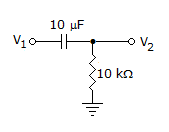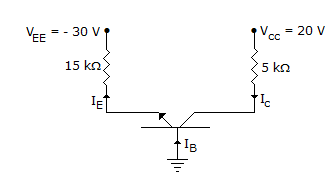ECE :: Analog Electronics
-
In a JFET, gates are always
-
By connecting external resistances to a differential amplifier we can adjust
-
A feedback network to be used with an amplifier to provide oscillation is tested and found to give an output of 0.124 V with a 0.5 V input. What must be the minimum gain of the oscillator to provide oscillations?
-
For the circuit shown in figure low cut-off frequency is

-
In a CE amplifier the Q point is very close to saturation point on the dc load line. This results in
-
Class-B amplifier has less efficiency compared to
-
In the amplifier circuit figure the quiescent point voltage and current are

-
Calculate the O/P voltage of a non-inverting constant gain multiplier with R1 = 100 kΩ, Rf= 600 kΩ, V1 = 2 volt, then O/P voltage Vo of non inverting op-amp is given by


 Whatsapp
Whatsapp
 Facebook
Facebook








